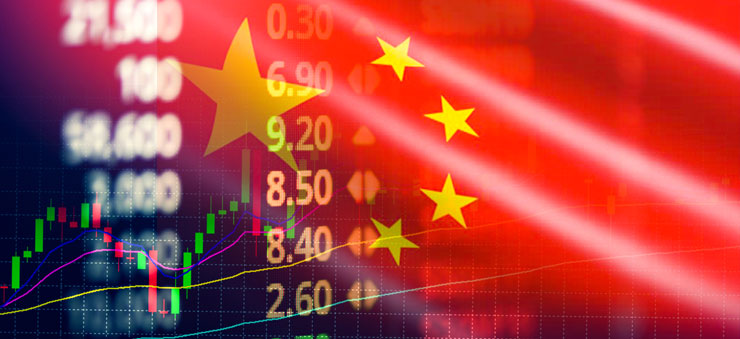Yuan Recovers Slightly After China Accused of Currency Manipulation

The Chinese yuan has experienced a bit of a rollercoaster ride recently after U.S. President Donald Trump accused China outright of currency manipulation. This is the first time this accusation has been officially made since 1994.
After falling overnight, the offshore yuan continued to weaken against the USD a little, trading at 7.1382, which is the lowest level since the currency started trading internationally in 2010. However, it recovered slightly after Beijing’s stance, which was stronger than expected. Thus, the yuan ended up trading at around 7.0690.
Beijing Signals It Won’t Back Down
On Monday, Beijing’s stance was somewhat surprising but highly symbolic as they allowed the yuan to create a new 11-year low against the US dollar, with the Chinese onshore currency trading at 7.0699 against the USD. This is after U.S. President Donald Trump decided to end the trade truce that had lasted a month by stating he will impose tariffs of 10% on Chinese goods worth $300 billion starting on the 1st of September.
Experts perceived China’s move as a clear indicator that it has no intention of giving in to pressure and that the trade war will only get worse from now on. The ramifications of the trade war will be significant, especially considering that it has already had a detrimental effect on global economic growth.
However, on Tuesday, the Chinese central bank set the yuan at 6.9683, which was stronger than the market expected. This led to the yuan recovering slightly.
U.S. Treasury Department States China Is Manipulating the Yuan
On Monday, after the close of the stock trading session, the U.S. Treasury Department stated that it was clear China was manipulating its currency after the country allowed the yuan to drop to its lowest level in over a decade.
The result was a significant drop in the U.S. dollar, while the price of gold surged to create a new 6-year high.
The Treasury Department further said that Secretary Mnuchin would work with the International Monetary Fund to ensure that China would not benefit from an unfair competitive edge as a result of their actions.
The IMF didn’t respond to the U.S. Treasury Department’s statements. However, last month, they said that the yuan’s value was aligned with the fundamentals coming out of China, whereas they considered the dollar to be overvalued by as much as 12%.
President Donald Trump had already accused China before the U.S. Treasury Department issued their official findings of currency manipulation via Twitter.
He stated that China dropping the value of the yuan so low was currency manipulation and a major violation that would “weaken China over time.”
The statement from the Treasury Department said that the yuan’s sudden decline on Monday was a clear indicator that the People’s Bank of China had significant control over their currency’s exchange rate. Furthermore, it was also an indicator that the bank was prepared to manipulate the currency whenever necessary.
China’s actions are considered a violation of the commitment it made as part of the G20 group of countries to not competitively devalue the yuan.
The People’s Bank of China denied it was engaging in any form of manipulation. Yi Gang, PBOC’s Governor, stated that the yuan was at the right level based on the fundamentals. He also stated that China would not engage in currency manipulation in the future and it plans to maintain its foreign exchange policy.
The PBOC has stated that the yuan’s weakness is due to the trade war and that the fluctuations are normal. Some experts believe the yuan will drop as far as 7.3 to the U.S. dollar, especially seeing as Beijing has little incentive to maintain the stability of the yuan thanks to the trade war escalating.

